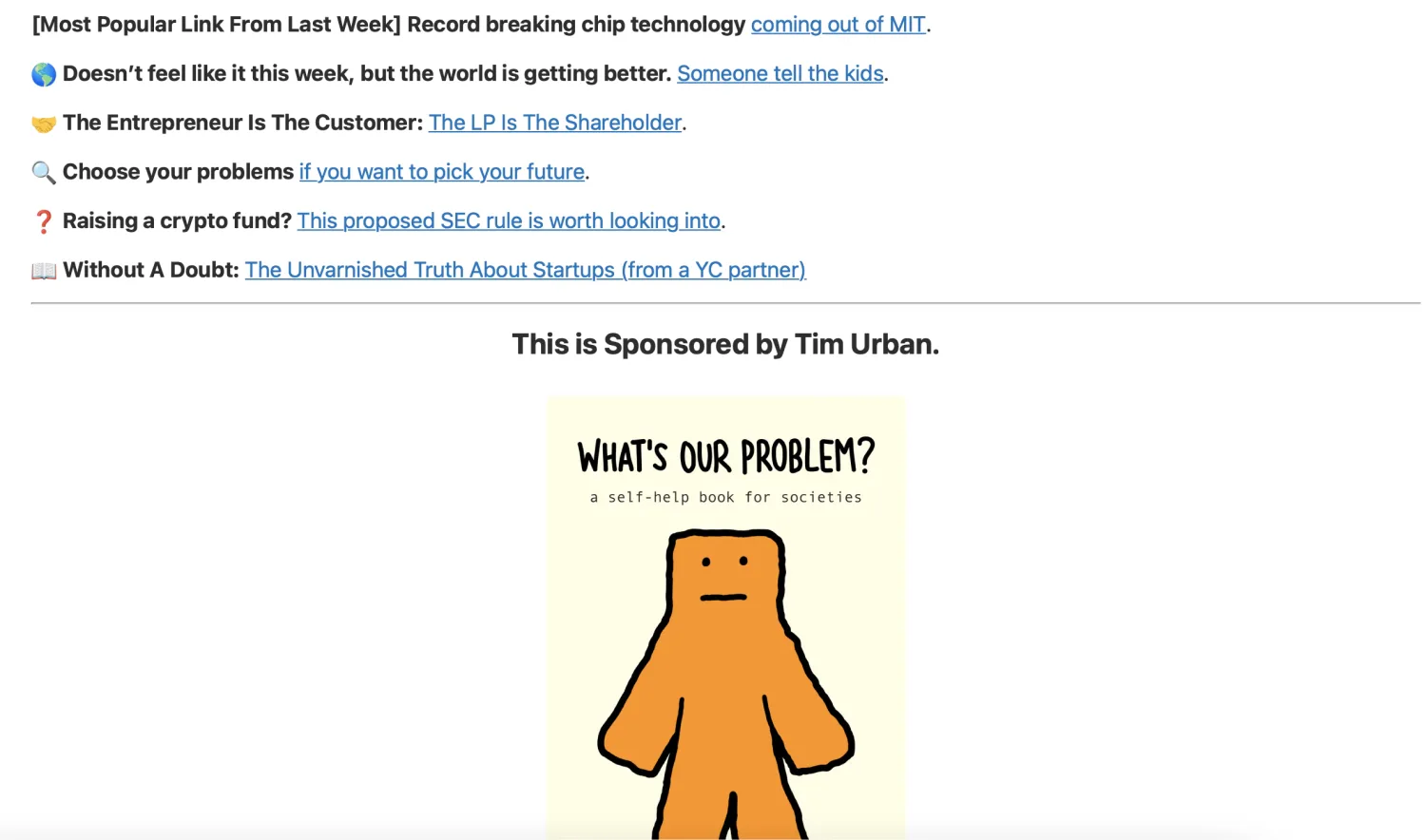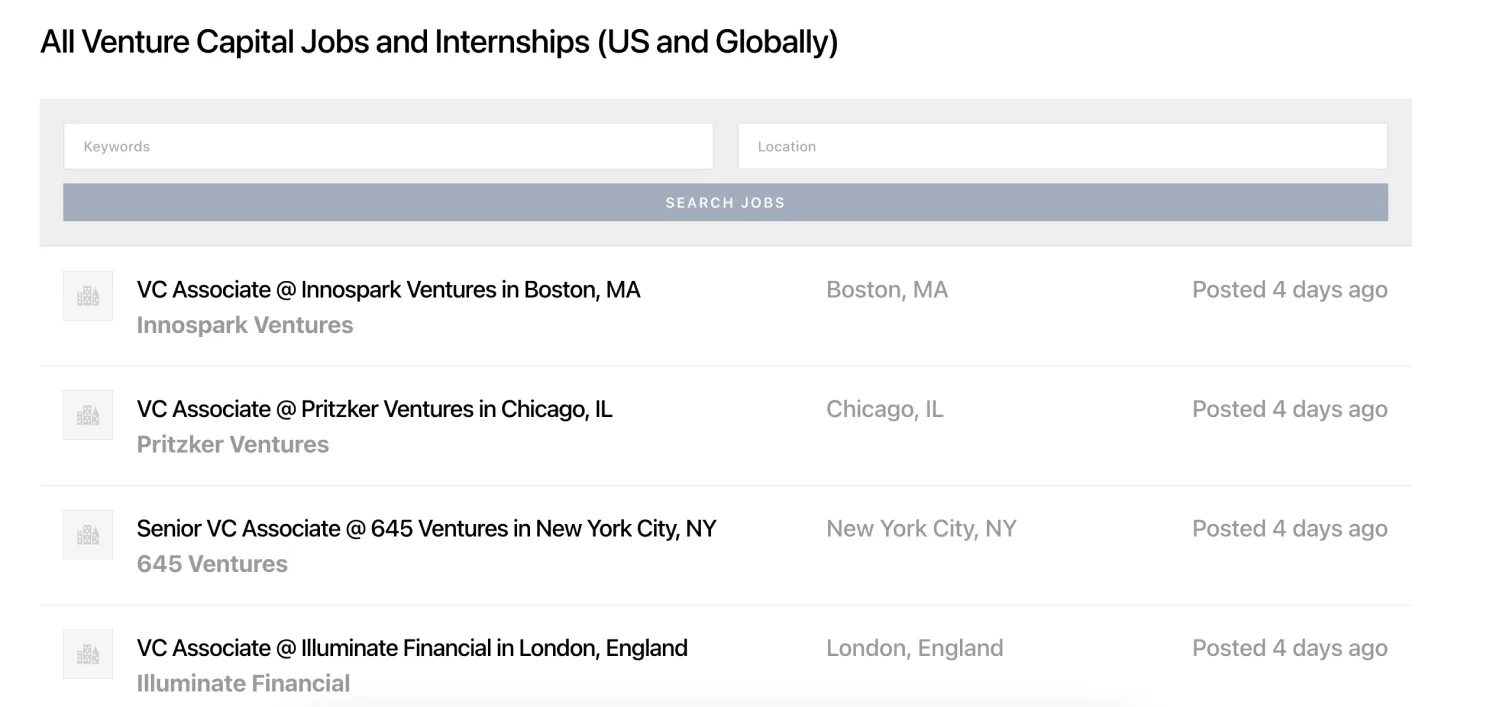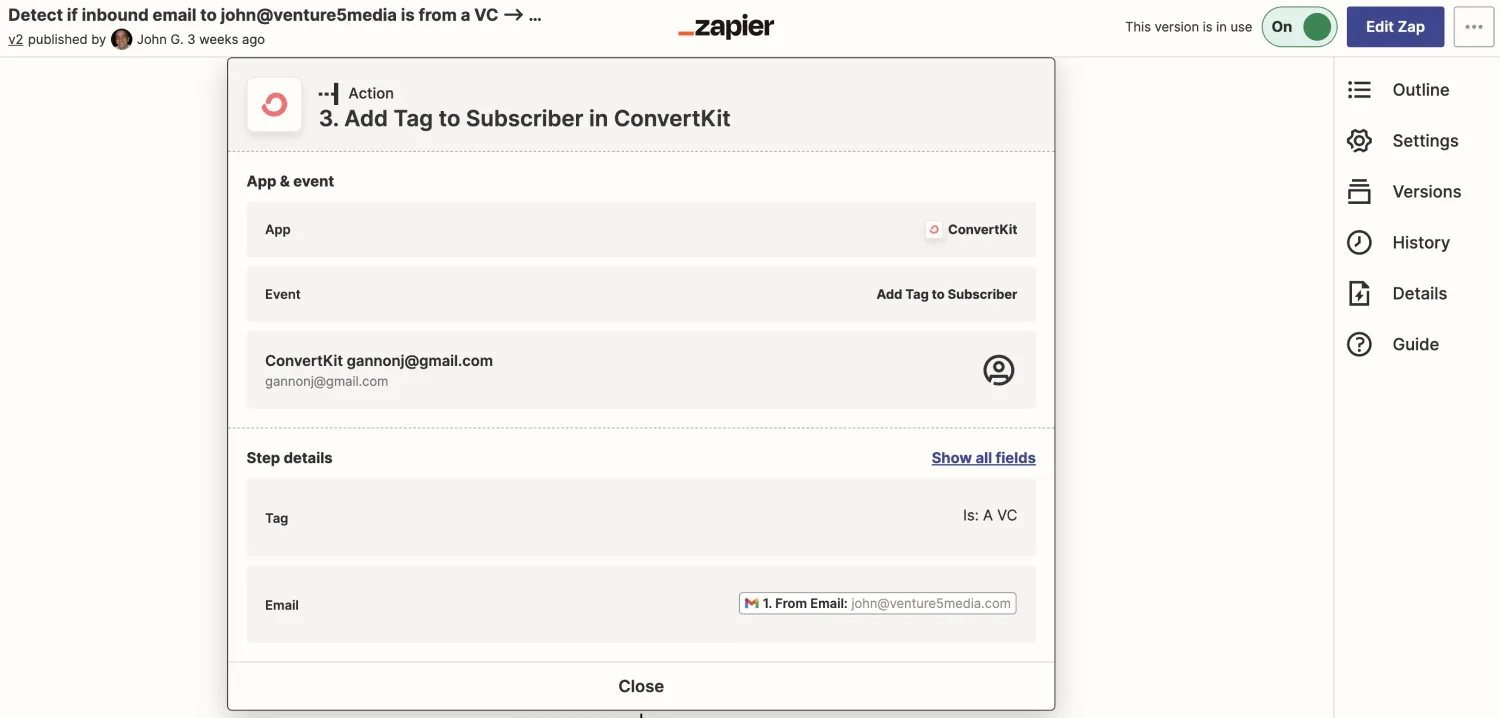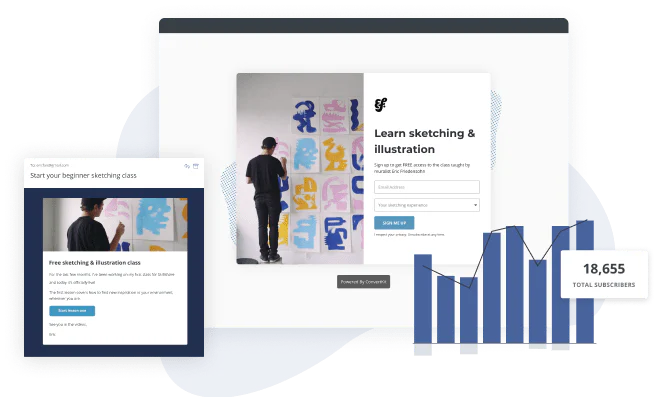In this Article
If you work in VC, you know John Gannon.
Since 2013, his blog has been the go-to source for career advice, startup resources, and under-the-radar news on VC financing and funding. What started as a side gig covering open jobs in the VC community has become his full-time creative career.
“Our audience covers pretty much the entire venture capital and startup ecosystem,” says John. “We’ve got about 30,000 subscribers spanning different publications, including our flagship, a weekly newsletter called VC Careers.”

John Gannon is the go-to authority on VC movers and shakers.
For years, John sent a weekly email digest to his list, often fielding questions on the side about VC deals, advice for startups, and help with career moves. After migrating to Kit in 2018, he was able to start scaling up.
Now, he’s expanded his emails to include more news and information — and his audience loves it. “I was originally worried about adding these emails and sending it to the same audience,” he says. “But I’ve spent the last decade building up trust, and we’ve found that people do want it, and they’re excited about it. We’ve been able to grow really quickly with the help of Kit.”

An example of a recent email newsletter.
In just five years, John and his team have grown his email list from 10,000 subscribers to 30,000, tripling his list size while maintaining killer open and click rates. Here’s a few techniques he uses to keep scaling without compromising on quality:
Tip #1: Build a community, not a brand
Everyone loves to hear about overnight successes, but the truth is it often takes time and a lot of work before you see results like this. John built his business with community in mind, not necessarily generating revenue. In the beginning, that meant a lot of work without much to show — but now, a decade and $1 million in, all that work is paying off.
“One of the things that really helps is trying to create something helpful for your community first,” he says. “Anyone can do a lead magnet. Anyone can put together a five-page PDF. But how can you create something that helps solve a major problem for the people in your audience?”

If you’re looking for a VC job, chances are it’s posted here.
John started a job board alongside his blog — a free service that he’s poured thousands of dollars into — but that, more than any other part of his site, is what gets subscribers in the door. “A job is a big part of any person’s life, and so if you can facilitate that for your audience, it’s definitely a value-add. This is a strategy any creator can use for their community if it makes sense.”
Tip #2: Create a lead magnet no one else can replicate
Part of niching down is choosing a product or service that no one else in your community can do the exact same way. But “unique” is a tough ask these days. You can find pretty much anything on the Internet at pretty much any price. That’s why John leverages his own audience to help build his content.
“Every year, we run a yearly venture capital salary survey, and that’s something that’s hard to replicate,” he says. “ We survey all of the VCs on my newsletter list, and then also speak with the firms we have close relationships to, aggregate all that data, and design extremely detailed pieces of content. We create a private version for respondents and a public version that becomes one of our biggest lead magnets.”

The Venture Five Media team does this survey every year.
This is a great example of something that provides a ton of value for your community but isn’t something many creators can or are willing to do because it takes time, effort, energy, and access to an engaged audience. But if you can find the time, you can provide a service that solidifies your community around a topic. It doesn’t have to be salary — it can be a “ state of the industry” report or a deep-dive into a specific topic you already cover. What matters is that it’s a kind of lead magnet few creators pursue, which can help you stand out.
Says John, “It goes back to helping people. It’s so rewarding to hear back from folks that have used the report to negotiate a raise. This creates a tremendous affinity with your brand as a creator.”
Tip #3: Establish a strong segmentation strategy
Even though John’s list is 30,000 people, very few emails go out to the entire list. Instead, he has a detailed segmentation strategy that ensures every subscriber gets the most relevant information and product offers.
“I believe that folks join my list because they have a problem they’re trying to solve, and what I should be doing as a creator is figuring that out and showing them the solution to their highest priority,” says John.
His current focus is on brand new subscribers. “I try to catch everyone right away when they sign up. So every time I get a new subscriber, I add a tag in Kit,” he says, using Kit’s Zapier integration to pull multiple sources together. “We apply a VC filter to anyone who submits a job post or whose email domain matches common firms. This gives me a very specific segment I can go to for VC-related topics and programs, but also to get feedback and get a pulse on what’s going on in the VC world.”

John uses a combination of Zapier and Kit to make sure every subscriber is tagged right when they first join the list.
But his segmentation strategy isn’t one-and-done. Within Kit, his team has set up multiple tags based on subscriber behavior so that he can continue to serve up relevant products or newsletters as he expands his publication cadence. “It’s important to identify early on in the subscriber journey what their key pain point is. I’m not going to offer the same thing to everyone. I want to know, what are they interested in right now? By using tags, I can track this and adjust my launch email lists accordingly,” says John.
These tags all live in Kit, which John and his team can pull when they’re ready to launch their next product. For his most recent offer, he created a segmented email list in Kit that included:
- Any brand new subscribers (defined as the last three months)
- Anyone who had clicked on any of his $99 product emails in the previous month
- Anyone who clicked on his teaser broadcast email for the offer
- Anyone who had purchased several previous related products

One of the final reminders in the launch email sequence.
Making these emails as relevant as possible based on previous subscriber behavior leads to more sales, more quickly. Says John, “I’m seeing a 66% open rate, and a really great click rate, on these launch emails for my most recent offer. The other thing that’s been surprising for me is that I got a purchase from someone who has only been on the email list for three weeks or so.”
Tip #4: Embrace the underrated art of the downsell
Even the best product offers won’t sway 100% of your list when you launch a new product. When that happens, don’t despair — you may still be able to deepen your relationship with your subscriber or get a purchase, just not the one you had hoped for. This is where the downsell comes in.
Says John, “When I run a launch sequence, I usually do one email a day from Monday through Friday. On the following Monday, for anyone who hasn’t made a purchase, I offer a few other relevant products instead. Basically, I say, ‘Hey, I know you weren’t interested in this, but here are a couple of other things that may be a better fit.’”

If someone doesn’t make a purchase, they may not be ready for that much commitment. Hit them with a softer sell instead.
What’s important about this technique is that after the downsell, if they still don’t buy, John follows up with a personal note-style email asking why. “I get very interesting feedback there,” he says. “A lot of times, it’s common, like no time or not enough money, but sometimes I get the perfect nugget of insight I can use while marketing my next offer. Sometimes it’s about addressing those concerns up front.”
Tip #5: Go pro as soon as you can
The difference between 10,000 subscribers and 30,000? A team of people behind-the-scenes. “Once I developed a repeatable process for someone to actually go out and research jobs and post them, that’s when things started to hockey stick,” says John. “Now, I have five part-time remote workers on my team, and they each have different focus areas. My biggest advice is to go pro sooner, meaning, think about how to delegate and hire.”
Without extra help, John wouldn’t have expanded his offerings, both in terms of his email marketing efforts and his digital products. Right now, he has an operations person, an editor for each newsletter, and someone in charge of the job board, as an example. “It’s been especially rewarding for me as a creator,” he says. “People may start with me and spend a year or two with me, but then they go on and do amazing things. It’s been so fun to watch where people land, and know that I helped them on their journey.”
Between his team and Kit, scale becomes possible. That’s because our easy-to-use tools are designed specifically for creators to grow their businesses. It’s easy to grow your list with an intuitive landing page editor, segmentation tools, and more. Learn more about how Kit can help you grow your business.





